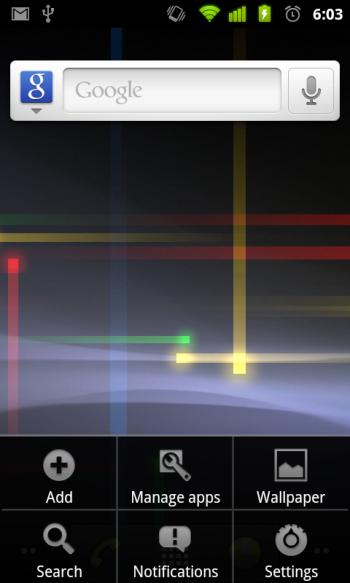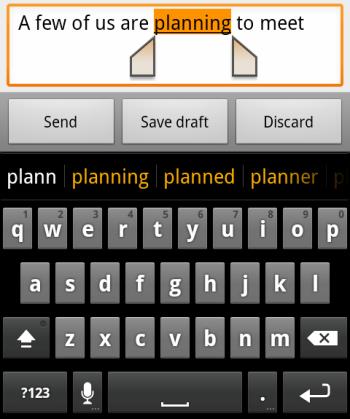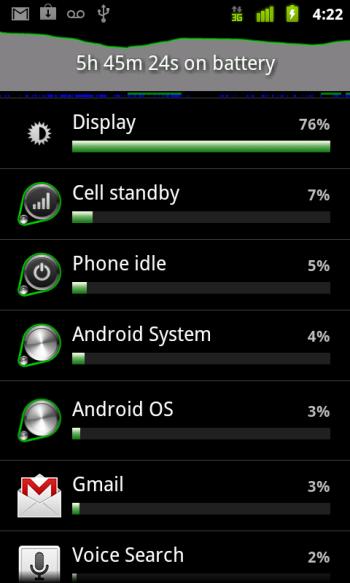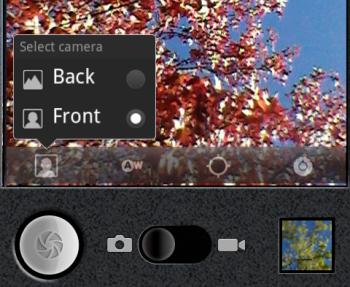30 new features of Android Gingerbread
Gingerbread, Android v2.3 has finally landed on the much heralded Google Nexus S. But though we love hearing about new phones, we also want to know what Gingerbread itself is like, especially as it’ll be rolling out to many other Android phones in the next few months (my HTC Desire HD included).
First impressions are that it’s a huge leap in making Android the tightest, slickest, most responsive mobile OS yet. There are a huge number of behind the scenes tweaks that improve Android’s speed, improve its battery life, massively improve its game performance and make the whole usre experience that much tighter and more intuitive.
It really is like a grown up Android!
However, it’s not a step change over Android 2.2 (FroYo). Although the user interface has been improved, it’s only a slight cosmetic tweak. The real step change will come with Android 3.0 (Honeycomb), which should be with us early next year.
Instead, what Gingerbread gives us is a much more polished mobile OS that’s more stable, much faster and responsive, has better battery life, and which is still set to delight Android owners whose phones will get the update over the next few months. In preparation, then, here’s a list of the 30 new features to look forward to with Android Gingerbread.

30 new features of Android Gingerbread
User interface improvements
- User interface refinements across the whole system
- New keyboard with easier to hit keys and a much improved layout
- “Key chording”, which enables more than one key to be hit at the same time (e.g. hold down Shift and press a key simultaneously) dramatically speeds up typing
- Improved one-touch copy and paste functionality, making it genuinely easy to use
- Revamped notification bar
- Supports five simultaneous points for advanced multitouch control (via the amusingly titled “multitouch.jazzhand” constant in the Android SDK)
- New downloads manager, which can be used by any application

Faster and more responsive
- Touch and keyboard events now handled much more quickly and efficiently
- Application responsiveness improved for all apps and especially games
- Floating point performance 2.5 times faster
- HTTP response sizes up to 60% smaller
Better battery life
- Much better battery life
- System actively shuts down apps that consume too much power
- Much easier to see which apps are consuming power
- Background apps managed much more aggressively to stop them slowing down the system

Much improved graphics performance
- Smoother animation thanks to a concurrent garbage collector that minimizes application pauses
- Improved video drivers for much better looking games
- Implements OpenGL ES 2.0 graphics library
- Supports new VP8 and WebM video and image formats
New Connectivity features
- Built-in SIP protocol stack enables VoIP Internet telephony
- Internet calling built-in to the user interface
- NFC API lets developers create apps that can interact with NFC smart tags embedded in posters, t-shirts and other products

New sensors supported
- New sensors supported (as long as the phone has the sensors installed) including gyroscope, linear acceleration, gravity, and barometer. Get ready for the first Android weather predicting phone!
- New sensor support enables games that recognize tilt, spin, thrust, and slice.
- Tag photos by date, location and altitude
New Multimedia features
- Support for multiple cameras on the same device
- New audio effects, such as bass boost, equalization, and reverb
- Audio effects are mixable, allowing you to mix your own effects either globally or just for an individual track
- Tablets now supported thanks to extra large screen sizes being fully suported
- Function to search for music and immediately play the tune upon finding it

Summary
That’s quite a list! When Gingerbread comes to 2010’s Android phones such as the Desire HD and Galaxy S, it should make them perform like never before, and although they won’t be able to benefit from the NFC features, they’ll certainly benefit from the speed boosts, enhanced graphics and better battery life.
In fact, with this many code changes under the hood, all helping to make Android a much slicker OS, it could make your existing Android phone feel like a completely new model! If you want to see Gingerbread in action, check out our list of 13 Nexus S and Android Gingerbread videos.
In the meantime, if you’re desperate for a Gingerbread phone now, your only option is to buy a Google Nexus S. The next Gingerbread phones won’t be out until February at the earliest, while Gingerbread updates to existing FroYo phones should take place from around March 2011.
Right, that’s Gingerbread done, who’s got any Honeycomb news?!
[Source: Android]








